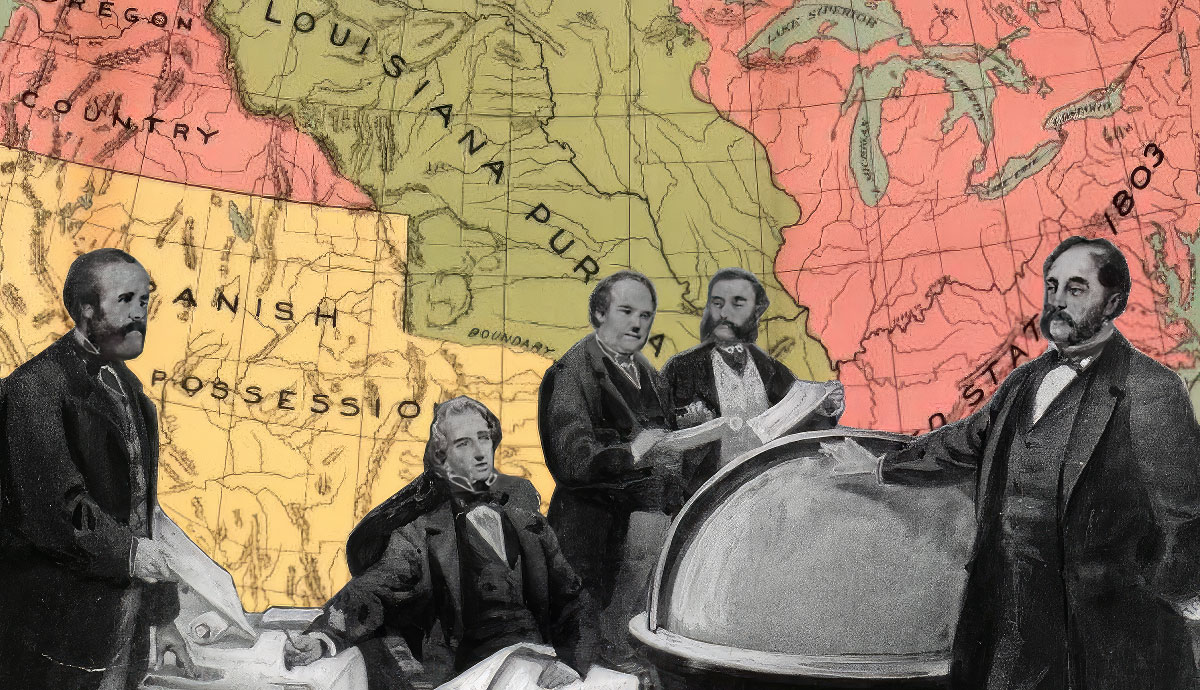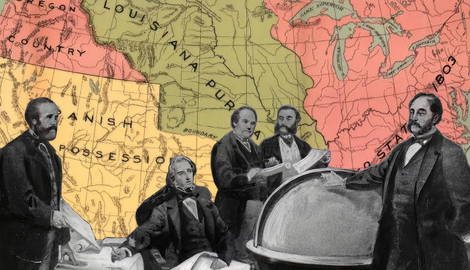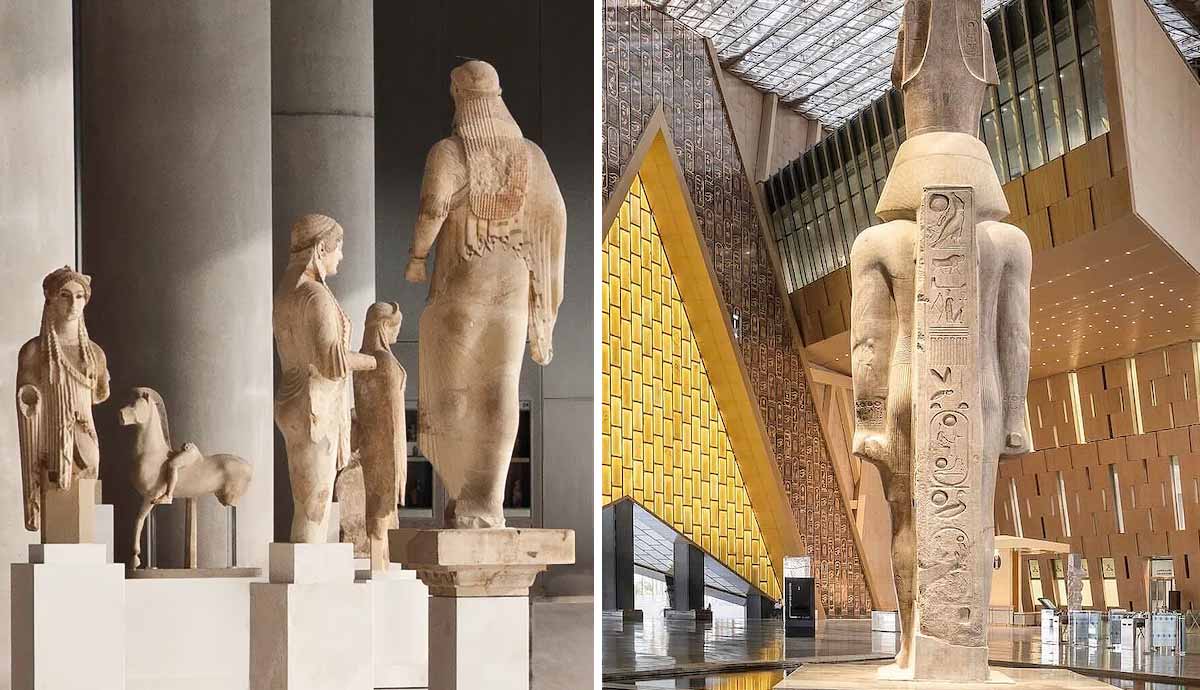
Since the Middle Ages, sovereign nations have been interested in acquiring new territories. New land could be gained through numerous means: conquering, occupying, ceding, creating treaties, and purchasing. Often, purchasing new territories was a stipulation of treaties. Countless territories have been bought and sold throughout history for varying prices. Sometimes the buyer paid rent, and sometimes the price was not paid in money but in labor and dependence. This article will examine 10 famous land purchases and how much was paid for each.
1. Estonia, Livonia, Ingria, & Southeastern Finland: 2 Million Thaler

The Great Northern War, which raged for over 20 years, ended in 1721 with the Treaty of Nystad, in which King Frederick I of Sweden sold Estonia, Livonia (today split between Estonia and Latvia), Ingria (the land between Finland and Estonia), and Southeastern Finland. The new owner, Tsar Peter the Great of Russia, paid 2 million Swedish thalers to the king, worth roughly $32 million today. While Russia already controlled much of its purchased territory, Tsar Peter the Great saw the move as a necessary diplomatic action toward Sweden to achieve peace. The Tsar’s ability to use diplomatic means was invaluable in his occupation of many Baltic states. In addition to the price paid for territory, Russia also ceded the majority of Finland to King Frederick I.
2. Corsica: A Military Debt

The Mediterranean island of Corsica has been continuously occupied since the Mesolithic period. It was a hot-button item of contention in the Middle Ages between many contingencies of Italian republics. Most famously, the Republics of Pisa and Genoa fought over the island, with the Genoese prevailing and occupying Corsica from 1347 to 1729. However, Native Corsicans grew tired of the occupying regime, and the Corsican Revolution began in 1729, eventually ending with the island’s independence in 1755. While Corsica drafted a Constitution and was ruled independently, the Republic of Genoa lay in wait in coastal cities that they managed to maintain control over during the 26-year revolution.
In exchange for their debt of military aid on the island, the Genoese sold the island of Corsica to King Louis XV of France in 1768. It was not until 1770 that Corsica was officially incorporated into France.
3. The Louisiana Purchase: $15 Million

In 1803, President Thomas Jefferson sent James Monroe and Robert Livingston as representatives of the United States to acquire the port of New Orleans from France. The men instead were surprised when Napoleon’s Empire offered the whole of their territory in the modern United States. The emperor initially had grand ambitions regarding his land in North America; he was after a colonial empire. However, these goals were reconsidered after the depletion of French troops during the Haitian Revolution, and the prospect of war with Britain loomed large. Instead of focusing on colonial acquisition, France decided to sell their territory to the United States for $15 million, which, adjusted for inflation, is about $340 million in today’s money.
The Louisiana Purchase included land from 15 American states and part of modern-day Canada. This territory included the whole of Arkansas, Missouri, Iowa, Kansas, Nebraska, and the Dakotas.
4. Florida: $5 Million

The Adams-Onís Treaty, ratified in 1819, established the United States’ purchase of Florida from Spain’s King Ferdinand VII. Negotiated by John Quincy Adams, the US Secretary of State, and Luis de Onís y González-Vara, the Spanish diplomatic envoy, the treaty itself ceded the entirety of Florida, along with parts of Alabama, Mississippi, and Louisiana. The United States paid $5 million, which today equates to $101 million.
Spain and the United States had long disputed the boundaries of their territories in the aftermath of the American Revolution, but with the Latin American Wars of Independence, Florida was nothing more than a burden to Spain. Spain could not afford to defend and maintain settlements in North America when so many of its other colonies were rebelling. The original treaty, however, only lasted 183 days, after which Spain recognized Mexican independence. Mexico swiftly took control of the territory, and the two countries didn’t again establish the borders ceded by the Adams-Onís Treaty until 1832.
5. Singapore: 8,000 Spanish Dollars per Year

The Treaty of Singapore, established in 1819, is recognized as the founding of modern Singapore. The British Empire desperately wanted a colony in South Asia that could rival the Dutch occupation of the area. Thus began the expedition of Sir Thomas Stamford Raffles, who decided that Singapore was the post the British East India Company needed. When he arrived, Raffles found Malays ruled the island from the state of Johor. The Sultan of Johor, while exiled, still controlled the island through the Temenggong of Johor, his younger brother.
In the Treaty of Singapore, Raffles agreed to pay a yearly sum to both the Sultan and the Temenggong of 5,000 and 3,000 Spanish Dollars, respectively. In exchange, the British East India Company was allowed a trading post in the port, and the British settlement of the island was established. It was named an official British colony in 1824. The Republic of Singapore was founded after its independence from the United Kingdom in 1963.
6. New Mexico, California, Nevada, & Utah: $15 Million

The Mexican-American War ended in 1848 with the signing of the Treaty of Guadalupe Hidalgo. The treaty stipulated the annexation of 525,000 square miles of land by the United States. This encompassed the present-day states of New Mexico, California, Nevada, Utah, and most of Arizona and Colorado. The United States paid Mexico $15 million for the territories, which today equals around $480 million. This purchase meant the loss of 55 percent of Mexico’s land, as well as the loss of its claim to Texas. The treaty also provided provisions for Mexican nationals living in the annexed territory, guaranteeing their rights to property and civil liberties. This purchase officially expanded the borders of the United States to the Pacific Ocean.
7. Alaska: $7.2 Million

The Alaska Purchase of 1867 was a result of the Russian Empire’s need to sell the territory following the Crimean War. The United Kingdom controlled much of the territory surrounding Alaska, and the land had been occupied by relatively few Russian settlers throughout its history. Tsar Alexander II was wary of defending the remote territory against incursions from the British, thus necessitating its sale. The United States Secretary of State, William Seward, negotiated the purchase of Alaska from the Russian Empire in 1867 for $7.2 million, the equivalent of $145 million today.

The treaty was passed by a significant margin in the Senate, but reception among the American public was split. Many saw it as an advantageous trade link between the United States and Asia, but others called the purchase “Seward’s Folly,” and mocked the purchase. This disdain was because Alaska was a sparse and largely inhospitable landscape. Public perception changed, however, in 1896, when massive deposits of gold were found in the territory, and the Klondike Gold Rush began. Despite its lucrative nature, Alaska was not incorporated as a state until 1959.
8. Hong Kong: A 99-Year Rental for an Unknown Price

While a set price was never named, British-occupied Hong Kong was leased by the Chinese to Britain for 99 years in 1898. This lease was the result of waning popularity in the outright sale of sovereign states to colonizing forces. However, the initial British occupation was a result of the Opium Wars, and the price of Hong Kong was access to its harbor. The United Kingdom retained an active hold on trade with the Chinese from their territory off the coast of mainland China.
Sir Claude MacDonald, the diplomat who negotiated the lease, never expected that the United Kingdom would return the territory. In 1997, Britain did precisely that in the Handover of Hong Kong, wherein the British gave its former colony to the Chinese. Until 2020, Hong Kong was a special administrative region of China, meaning it was a relatively independent and self-governing state. However, in 2020, stricter national security laws tied the former British colony to the mainland Chinese government more closely.
9. The Philippines: $20 Million

The Spanish-American War resulted in the Treaty of Paris, establishing peace between the two nations. It also ceded territory to the United States. Independence was won for Cuba, while Guam and Puerto Rico were handed over to the US Included in this treaty was the purchase of the Philippine Islands from Spain for $20 million, or $720 million today. The Philippines never recognized this purchase, and before the treaty was ratified, fighting broke out between Filipinos and Americans. This led to the Philippine-American war, which lasted from 1899 to 1902. After the war, The Jones Act of 1916 guaranteed eventual independence to the archipelago. In 1935, the Philippines were declared a commonwealth of the United States, and in 1946, the country was granted independence.
10. The Congo: 215.5 Million Francs

In 1885, Belgian King Leopold II brutally seized the African region, which he would name the Congo Free State. Despite its name, the Congo Free State was anything but free during Leopold’s reign. Instead of governing the region as a colony of Belgium, Leopold held the Congo as a personal possession, which guaranteed him the sole ownership of profits generated by the country’s rubber plantations. The Congo Free State is now synonymous with brutality, and it is estimated that around half of the native Congolese perished with Leopold in power. The scope of the brutality, however, did not end with death. Many Congolese people were punished through torture, starvation, and amputation of limbs. The human rights abuses of Leopold’s dictatorship became widely known, causing demonstrations and protests throughout Europe. Because of such international pressure, Leopold was forced to sell the Congo Free State for 215.5 million francs.










